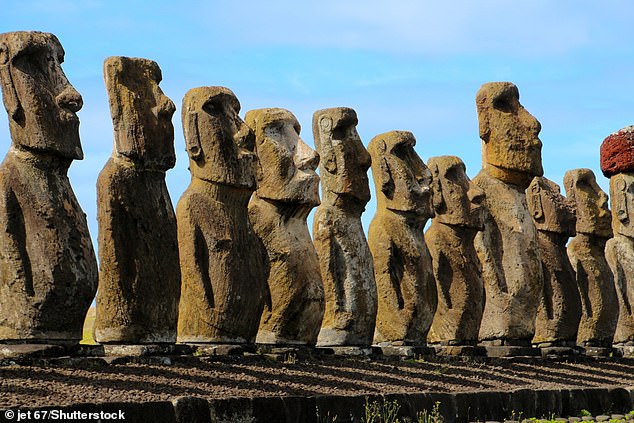
Easter Island Archaeological Discovery Upends Conventional Theories of Ancient Civilization
Easter Island’s Surprising History: New Study Reveals Cultural Connections
(Word count: ~600)
[Image 1: Moai statues on Easter Island]
Caption: The iconic moai statues, carved between AD 1250–1500, have long symbolized Easter Island’s mystery. New research challenges the idea of its total isolation.
Easter Island (Rapa Nui), located 2,000 miles off Chile’s coast, is one of Earth’s most remote inhabited spots. Settled around AD 1200 by Polynesian seafarers, its massive stone statues, or moai, have captivated explorers and researchers. Traditionally, the Rapa Nui people were thought to have lived in complete isolation after their arrival. However, a groundbreaking study from Sweden’s Uppsala University suggests the island maintained cultural ties with other Polynesian societies for centuries.
New Findings Challenge Isolation Theory
The study, published in Antiquity, analyzed archaeological sites and radiocarbon data across Polynesia. Researchers found shared ritual practices and architectural styles, particularly stone platforms called ahu—rectangular tombs often topped with moai on Easter Island. Similar structures exist on islands thousands of miles west, like Tahiti and the Marquesas.
“Easter Island was settled from central East Polynesia using double-hulled canoes,” said lead researcher Professor Paul Wallin. “Their seafaring skills allowed ongoing interactions, not just a single migration.”
[Image 2: Ahu platform on Mo’orea, French Polynesia]
Caption: Ahu platforms, like this one in French Polynesia, were ritual sites. Their presence across Polynesia hints at cultural exchange.
Cultural Connections Across the Pacific
Contrary to the “isolated civilization” narrative, the study reveals that Easter Island likely experienced multiple waves of settlers and ideas. The ahu tradition, central to Polynesian culture, may have originated on Rapa Nui itself before spreading westward—a reversal of earlier assumptions. These platforms served as sacred communal spaces, and their variations reflect localized adaptations of a shared tradition.
By AD 1300–1600, hierarchical societies emerged independently on islands like Hawai’i, Tahiti, and Rapa Nui, each building monuments to showcase power. This suggests a complex network of communication and cultural exchange across vast oceanic distances.
[Image 3: Map of Polynesia]
Caption: Easter Island (far right) was part of a broader Polynesian cultural sphere, despite its geographic isolation.
Collapse and European Contact
The Rapa Nui civilization thrived until European arrival in the 18th century. Dutch explorers in 1722 and British navigator James Cook in 1774 documented a society in decline, with toppled statues hinting at internal strife. By the 19th century, disease, slave raids, and colonization decimated the population. Recent studies also suggest climate fluctuations and deforestation may have contributed to pre-European challenges.
Legacy and Modern Threats
Today, Easter Island is a UNESCO World Heritage Site, with tourism as its economic cornerstone. However, mass tourism and plastic pollution threaten its delicate ecosystem. “In the 1980s, beaches were pristine. Now, microplastics wash ashore from around the globe,” noted co-author Helene Martinsson-Wallin.
[Image 4: Tourists viewing moai]
Caption: Tourism sustains Easter Island’s economy but brings environmental challenges.
Key Takeaways
- Easter Island’s settlers arrived from Polynesia around AD 1200, with later interactions.
- Shared ritual platforms (ahu) indicate cultural links across Polynesian islands.
- European contact triggered societal collapse, though internal factors may have played a role.
- The island’s moai remain a testament to a sophisticated, interconnected ancient culture.
This research reshapes our understanding of Rapa Nui, highlighting Polynesia’s dynamic history of exploration and exchange—a narrative far richer than solitary isolation.


